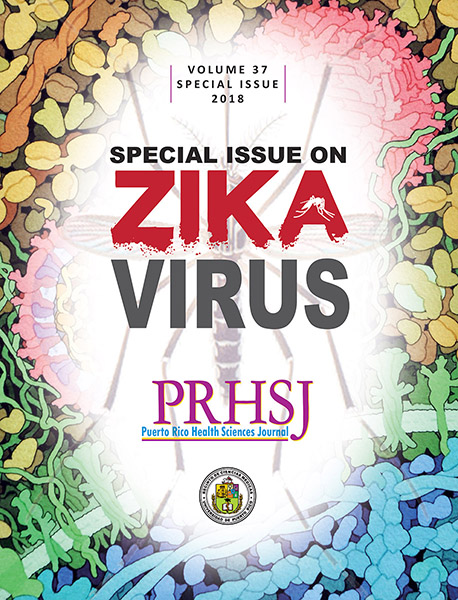Abstract
We report on the first autopsy performed on a neonate with congenital Zika syndrome in Puerto Rico. A term male was born to a mother with confirmed Zika virus infection; he had a prenatal diagnosis of microcephaly and multiple cerebral calcifications, among other anomalies, and a normal male karyotype (determined by amniocentesis). He required neonatal resuscitation at birth and died at 2 days ofage. At autopsy, his head circumference was only 1.5 standard deviations below the mean, not fulfilling the criteria for microcephaly. He presented scissor legs, clenched and hyperflexed hands, and multiple contractures (arthrogryposis). The central nervous system findings were consistent with Zika encephalopathy: ventriculomegaly, lissencephaly, and severe encephalic degeneration with numerous dystrophic calcifications, among other findings. These anomalies were most likely secondary to congenital ZV infection. Although prenatally diagnosed with microcephaly, he did not fulfill the criteria after birth, which fact indicates the need for reassessment of the definition of microcephaly as it applies to patients exposed prenatally to the ZV.
Authors who publish with this journal agree to the following terms:
a. Authors retain copyright and grant the journal right of first publication with the work simultaneously licensed under a Creative Commons Attribution License that allows others to share the work with an acknowledgement of the work's authorship and initial publication in this journal.
b. Authors are able to enter into separate, additional contractual arrangements for the non-exclusive distribution of the journal's published version of the work (e.g., post it to an institutional repository or publish it in a book), with an acknowledgement of its initial publication in this journal.
c. Authors are permitted and encouraged to post their work online (e.g., in institutional repositories or on their website) prior to and during the submission process, as it can lead to productive exchanges, as well as earlier and greater citation of published work (See The Effect of Open Access).
